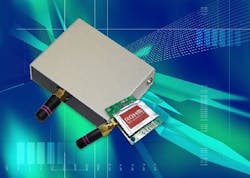Sunnyvale, CA--Because global positioning system (GPS) operation is often spotty or non-existent indoors, ROHM Semiconductor has collaborated with Ritsumeikan University (Kusatsu, Japan) and Information Services International – Dentsu, Ltd. (ISID; Tokyo, Japan) to develop Guidepost Cell, an indoor location detection infrastructure that supplies highly precise positional data to smartphones and other mobile devices to wirelessly determine a user’s location inside buildings and in underground malls with an expected positional accuracy within 1 m while requiring no external power source for operation.
Since 2009, Ritsumeikan University and ISID have conducted collaborative research as a part of a joint effort between industry and academia on the evolving aspects of human-computer interaction in "ubiquitous environments." Research and development of Guidepost Cell began within this framework. Ritsumeikan University was responsible for developing the positioning algorithm while ISID was tasked with developing prototypes and applications and formulating the positioning service infrastructure. In 2009, ROHM began development of dye-sensitized solar cell (DSC) technology for generating electricity from indoor lighting in order to meet the future need for energy harvesting. ROHM is currently working towards improving efficiency and establishing a production system.
Guidepost Cell uses ROHM's DSC technology that efficiently harvests energy from indoor lights (48 microwatts per square centimeter under 1000 lumens per square meter), eliminating the need for an external power supply while reducing installation and electricity costs. Other applications for Guidepost Cell include indoor power sources for low-power electronic devices such as wall clocks and calculators as well as next-generation systems such as indoor sensor networks.
SOURCE: WelComm agency for ROHM Semiconductor; http://welcomminc.cmail4.com/t/ViewEmail/r/32C02B2EB3D83295/02AF8A85A7F537660B3A73003FEB3522

